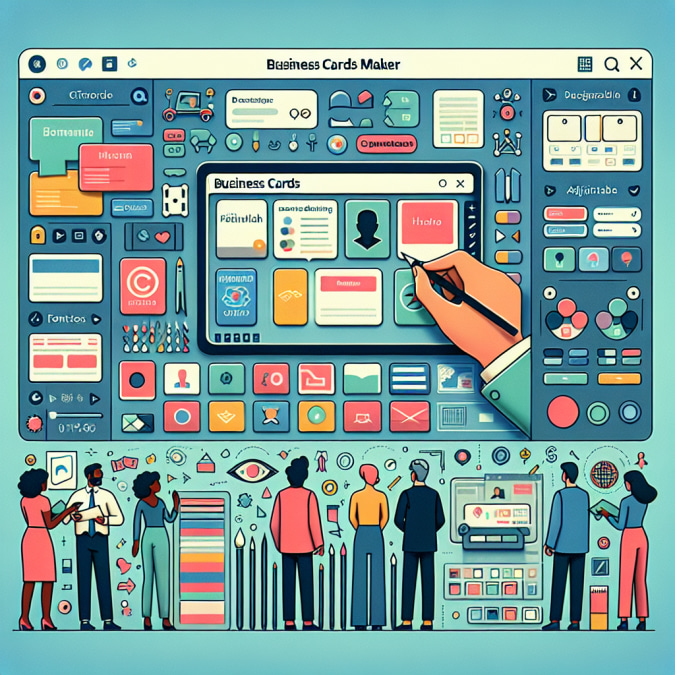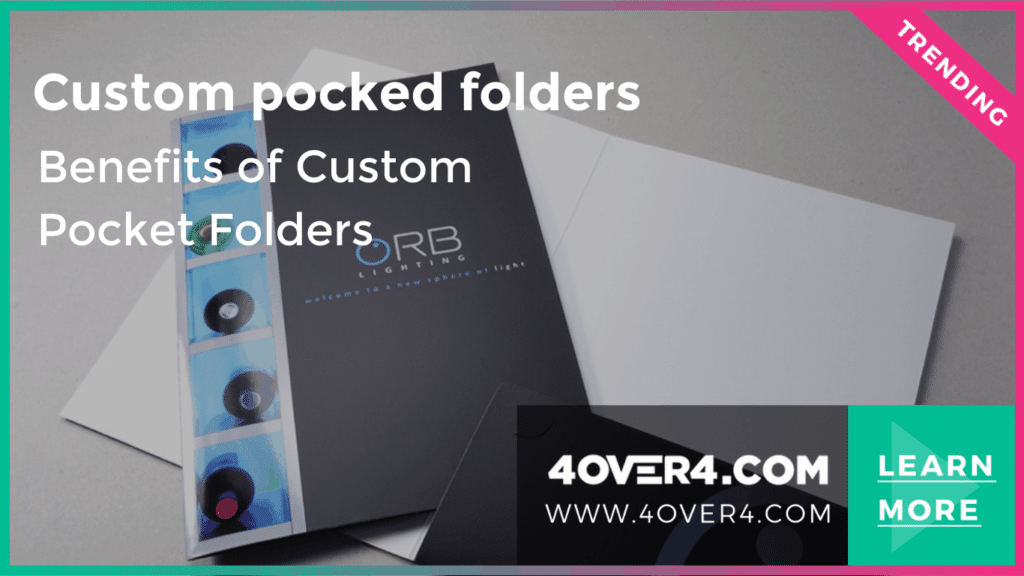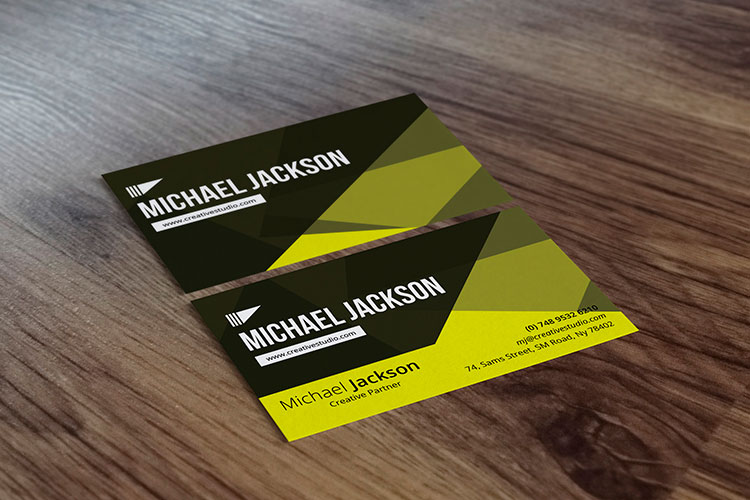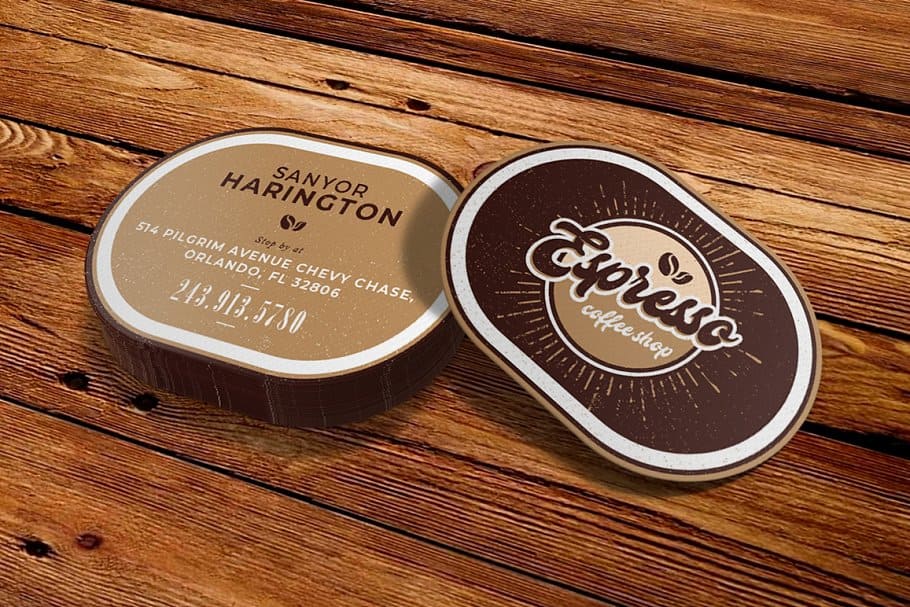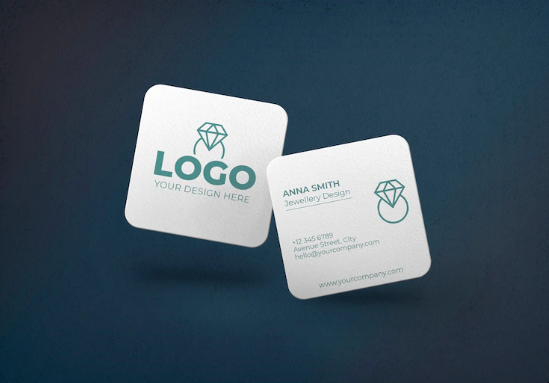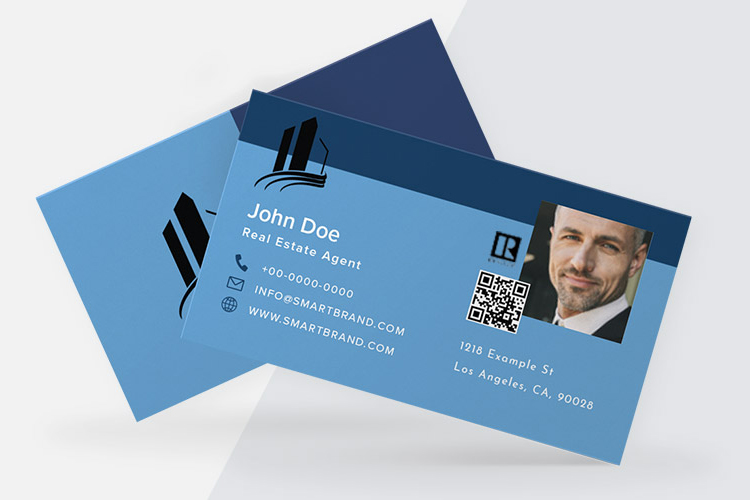The Ultimate Guide to Lenticular Printing
Invalid Date9909 views
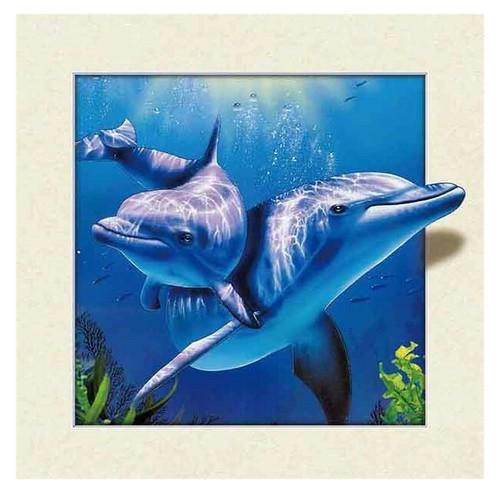
What is 3D Lenticular printing?
You may have heard of the word 3D effect severally but probably not the word lenticular. The concept of 3D is closely related to lenticular printing. You may have come across 3D lenticular images and prints such as notebooks, posters, business cards, postcards, stickers and so much more.
You noticed that they created an illusion to the human eye of animation and motion where different images are interlaced in one product. So you could play around with the print by tilting it around to see a different image depending on the angle of inclination or the angle at which you look at the product.
The most common use for 3D lenticular printing is posters. When you go to the movies, they use lenticular posters to show the different movies that are being aired in that cinema for a certain period of time.

Star wars 3D lenticular poster
With the rising popularity of lenticular printing, companies have started making 3D lenticular business cards as a strategy to woo prospective customers since they stand out and dazzle from afar.
The process of making such interesting versatile prints is called lenticular printing.
In simple terms, lenticular printing is about creating images that move or show depth using 3D illusion. Lenticular means relating to lenses which are called lenticules. These lenticules are made of plastic lenses that create the illusion of dimension in-depth imaging and or movement. The lenticules focus your sight on different parts of the underlying picture as the printed picture is actually made up of multiple pictures that are printed in alternating lines.
Conclusion: Take your branding to the next level
Lenticular printing is a growing art in the market because the prints are unique and set a business apart. One of the findings is that multiple images give a designer the opportunity to communicate multiple messages in one print.
Depending on the printing method you choose, you can get as many as 10 images. This allows you to dazzle, to arrest and maintain the attention of every single person that comes across these products.
It’s clear to see how much 3D lenticular printing has to offer, so what are you waiting for? Give our site a visit and let's get to work giving you a branding that will be sure to earn those coveted conversions! Whether you need stickers, bookmarks, business cards, notebooks, or posters, just let us know and we will advise you accordingly. Harness the creative power of 3D printing today and you will be glad you did.
Partner with 4OVER4 to get the most information you need about lenticular printing. You can also choose any 3D product for the lowest minimums in the market and at very budget-friendly prices. The website has an online calculator to make it easy for you to know how much your order will cost. Secondly, online purchasing and ordering.
When was lenticular printing invented?

The first inventor of 3D imaging was a woman, Dr. Valerie L. Thomas. She was a NASA scientist who broke the 1950 s traditional stereotype that only boys can become scientists.
She was a resilient woman of color who pursued STEM(Science Technology Engineering and Mathematics) even after lacking support from people. In 1964 she bagged a job at NASA as a data analyst. Her determination saw her being promoted to associate chief of the team creating NASA’s Landsat program. She attended a lightbulb illusion exhibition which made her curious to learn how light and concave mirrors could be used in her work at NASA. Talk of determination. Her curiosity led her to invent and patenting the Illusion Transmitter, which was a real-time 3D viewing object through the use of parabolic mirrors. Her invention is still being used to date by NASA.
How is lenticular printing done?
Lenticular printing relies greatly on the foundation of lenticular lenses, and the lenticular images they bear.
By putting together two or more desired images to be used in the printing process a lenticular image is created. They are built using a thorough method called interlacing, where two or more images are divided into tiny strips and then combined as a single image through numerous specific arrangements. When partnered with the lenticular lenses, these varying arrangements shape how the desired effects are seen by the viewer.
For example, strips arranged horizontally will create different effects as opposed to the strips that are arranged vertically. The difference lies in the binocular disparity or the dissimilar image location of your eyes. Simply put, it affects how the images are seen individually by your left and right eye, thus dictating the effect of the lenticular print.
This DIY video of alternating lines explains this: https://www.youtube.com/watch?v=FGbqklumW6A
By themselves, the lenticular images also control the effect. For example, different images are used when opting for the traditional lenticular printing effect called flipping. This is in order to show a sudden change in the images as needed. One of the best 3D lenticular photography business cards shows a snippet of the photographer’s work through this flip effect on the card itself.
For advanced effects like 3D, the images used to portray the different views and angles of the same image so as to create the illusion of surface depth through the magnification of different focal points and images.
When the desired effect is chosen and the lenticular images are processed, they are then printed for their intended purpose. From sports merchandise to business cards, lenticular prints have graced the magazine cover of Rolling Stones to movie classic posters like Matrix and Species II.
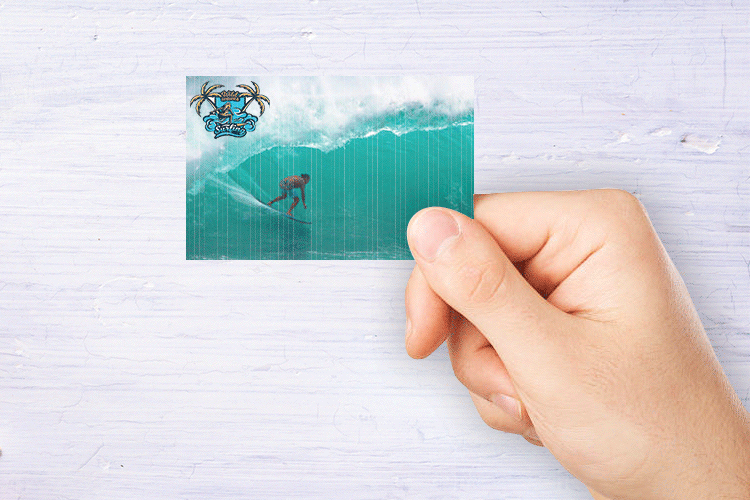
3D lenticular effect business cards
Types of lenticular prints
Traditionally, lenticular prints are divided into three main categories depending on the angle variations required to change the images. They are as follows:
Autostereoscopic prints
These are the type of prints where the viewer will look at an image that appears to have “real” 3D depth. Through a method called stereopsis, a variety of techniques are used to present the 3D image to each independent eye. This is similar to how shutter glasses work. Active shutter 3D glasses electronically open and close liquid crystal lenses over each eye, synchronized with the 3D medical monitor. When the monitor delivers a left-eye image, the 3D glasses cover the right eye so only the left eye sees the image on the monitor, and vice versa for the other eye.
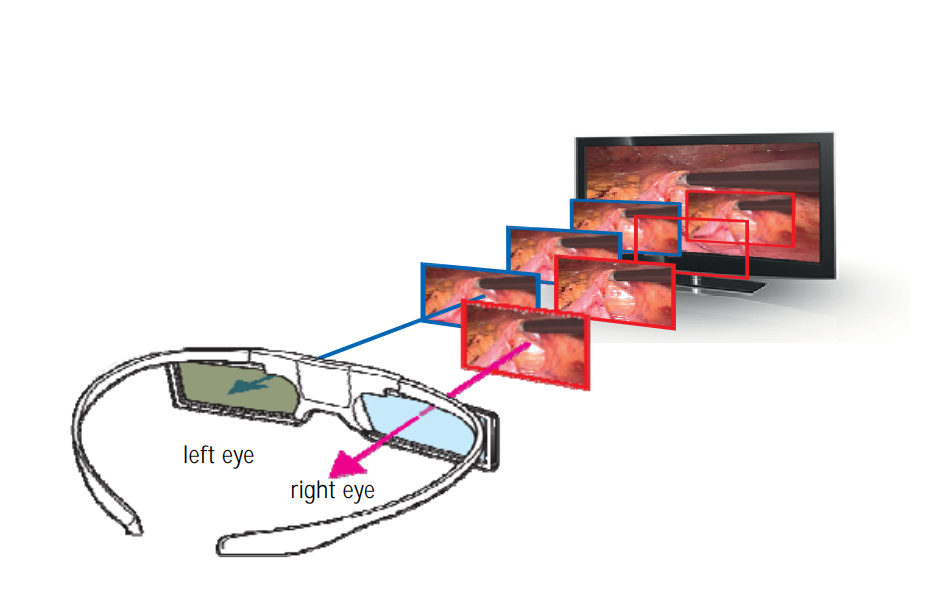
Motion prints
Utilizing the “medium” spacing, motion prints specialize in creating an illusion of movement using different images. Mostly sequential images, they bear small differences with each other so the transition eases the view to the next image smoothly. This effect is used to create the animated motion effect, as well as the zoom and morph effects
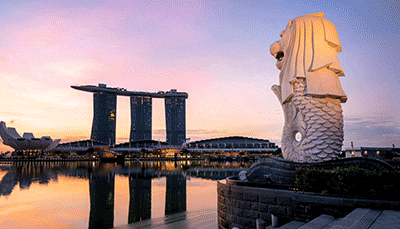
Animation motion gif
Transforming prints
This is the more known example of lenticular printing. Transforming prints use images that are much different from each other. The lenticular lenses it uses are also quite different as they allow for a larger angle change between images. In a sense, transforming prints are used so that viewers can see the drastic difference in images quickly and clearly.

Types of lenticular prints Effects
Experts at Johns Byrne say that there are two types of lenticular effects- animation and 3D. 3D lenticular effects create the illusion of depth by positioning visual elements on different spatial planes while animation effects play image frames like a motion picture projector which can vary from computer-generated animation, video, motion picture film, and time-lapse photography.
3D effect
This is one of the most famous lenticular printing effects out there. This particular effect specializes in giving new perspectives to common designs. Using stereoscopic prints, the 3D effect creates the visual illusion of depth and distance among the objects in the image.

3D lenticular effect
There are two kinds of 3D effects in lenticular printing. The first kind is the layered 3D effect. With this 3D effect, the individual objects in the images are separated in layers to create the illusion of natural depth from the inside. It is one of the simplest effects to create. The second kind is the volumetric 3D. Although slightly more complex, this effect produces a kind of realism that is unparalleled by other techniques. It is because of the relief feel and depth it adds to the overall image.
3D effects are highly versatile. They can be incorporated into most lenticular design styles and images. Proper focal points and color considerations play a large role in 3D effects. Bright imagery for the foreground and neutral colors in the background is highly recommended.
3D lenticular prints are commonly used in commercial areas and spaces where there is a steady flow of people as the effect is maximized by the viewer’s movement. They’re also popular with small business owners who have found ways to stand out with 3D lenticular business cards.
Morph effect
It is a challenge to create a morphing effect as it requires a different level of skillset, equipment, and overall technical setup than your standard lenticular effects. First, you need two different images to combine. After choosing the images, your trusted printer will now create the morphing transition using complex programs and algorithms. These transitions are then placed in between the two original images to show the flow of gradual change, as portrayed in the effect. Lastly, with the image conversion that transpired between the two images, the illusion of transformation or morphing is created.

Though many images could be morphed into one, it works best when the images are somehow similar in structure. Color, shape, and background particularly affect the morphing. When the images are not similar enough, they produce an unfavorable effect called ghosting. Ghosting happens when an image layer vaguely appears on top of the other because of their huge visual difference which breaks the illusion. If the images are structurally similar, then the morphing will be clean from start to end.
Morph effect is mostly seen in product promotions. It is often used in showing changes in features like in facial soaps and skin cream advertisements.
Zoom effect
This element propels the visual elements forward or they jump out towards the viewer. It works best when you want clients, customers and prospects to focus their attention on a product/service or your logo and that is why it “jumps” at them when they view the card.
As it is mainly used to highlight company logos, new products, and important messages, image-wise the Zoom effect can consist of multiple objects and even entirely different images. Lighter tones for the moving focal points and darker backgrounds allow for a great effect with zooming.
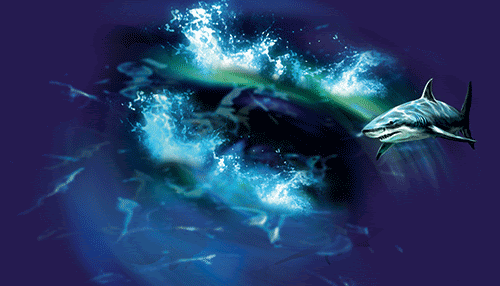
Zoom effect
Animation effect
This effect depends on the direction you want your images to move. A good example of lenticular images that require left/right viewing is lenticular bus shelter posters.
This is quite an interesting effect as multiple frames of sequential shots are to be collected. These images need only vary slightly from the next so it can capture the full motion of the total action. Typically, the images that are used for this effect comes from sequential still shots and actual master video frames for a more detailed and crisp look.
Storytelling is important with animation effects. It is supposed to clearly show a beginning and an end to the motion, which works perfectly when it is used to show a mechanical action or movement. When done correctly, the end product is similar to a very short movie clip.
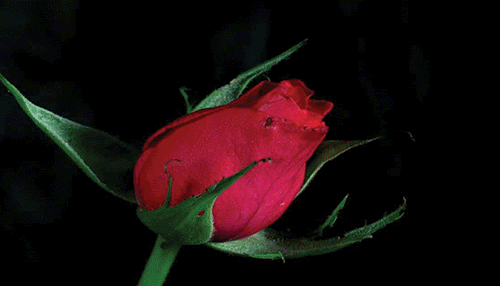
3D animation effect
Flip effect
Probably one of the oldest effects in the lenticular printing scene, image flipping is undoubtedly a classic. This is when visual elements of an image are completely transformed into another like switching them on and off hence the name flip. The flip effect is ideal for showing “cause and effect” or “before and after”.
Although one of the most commonly seen effects out there, it is also traditionally the most powerful effect to go for. Drastic changes are shown immediately with this effect as the contrast between two varying images is quite visibly strong. This lenticular printing effect creates a fast transition from one image to the next. It allows up to three individual images to be combined and viewed at different angles. What it lacks in elegant transition, it makes up in speed and simplicity.
Less is more for flip effects, and for optimal usage, only 2-3 images are mostly used for the effect. However, the images to be used can be up to 6 in maximum.
Although simple in nature, it is still one of the most effectively eye-catching and versatile techniques in lenticular printing. The ‘classic’ style it bears is still closely embedded with today’s psyche, which makes it easier for viewers to connect to it.

4 flip effect
Combination effects
With all these effects available, combining them would create even better effects. One of the most notable combinations of these effects is the 3D lenticular flips. Just the visual depth and distance created by the 3D effect gives the flip effect more emphasis. The foreground helps create an illusion of movement in the background. Combining effects enables a stimulating interaction between the print and the viewer.
Of course, these methods require skill and industry experience as the creation of effect combinations can be quite complicated. For example, there are 24 individual images to tend to when a 3-flip effect is added to a 3D effect compared to a standard flip effect with only 3 images.
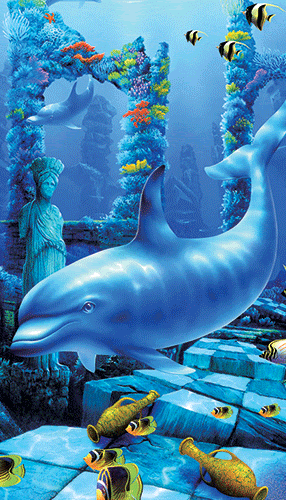
3D flip effect
As 3D and flip are two of the most versatile effects, their seamless combination creates visually stunning and aesthetically pleasing designs. Some notable examples of this effect are 4OVER4.com’s 3D lenticular business cards and postcards. These business cards and postcards deliver visually engaging imagery while sending a clear message to its viewers.
How to combine 3D lenticular printing and die-cutting
Anyone who has been printing any marketing collateral knows that creating unique prints that go above and beyond at grabbing attention will have to either use die-cutting or 3D lenticular printing. These are the two main styles of printing that are more likely to make anything stand out.
Well, how about if you could use both?
In case you didn’t know, die-cutting is the process of creating unique shapes on a stock material such as paper using a die. With digital die-cutting, there is no die needed which makes it much easier to get any shape any size of a print.

Die-cut camera shaped business card
By choosing to have your prints die-cut, you’re certain to get that second look at your business card and even start a conversation from it. So what if you combined both die-cutting and lenticular printing? That would definitely be taking your prints to a whole other level.

3D lenticular stickers
This is only possible at 40VER4 who have both technologies for any shape any size die-cutting and 3D lenticular printing . This would be a custom job that will be printed after you have provided all the details required such as the artwork and quantity.
Where to find custom lenticular printing
The following companies offer lenticular printing for various products.
USA
4OVER4, Lenticular world, Parallax printing, Zane Williams, Soft Motion 3D, Lenticular promo, Custom lenticular, Instructables, Digital City marketing, Photo Walgreens.
Canada
Soft Motion 3D, Objex Unlimited, The Printing House, Tracxn, CJ Graphics, Hot Pop Factory, Printer Studio, 3D Natives, 3D Printing Canada, Custom Prototypes.
United Kingdom
Twent3, Discwizards, UK Tradeford, Reflex Printstore, MJCP, Tribal 3D, Printer Studio UK and many others.
How much does lenticular printing cost?
If you are thinking of purchasing your first lenticular printing products, here is a printing guide that will help you. The following price list covers different lenticular products by 4OVER4 such as business cards, postcards, bookmarks, posters, stickers, magnets, greeting cards and notebooks.
3D Lenticular postcards prices
| Quantity | 4” x 6” | 4” x 6” Vertical | 6” x 4” Horizontal | 5” x 5” | 5” x 7” Vertical | 7” x 5” Horizontal |
|---|---|---|---|---|---|---|
| 500 | $ 999.00 | $ 999.00 | $ 999.00 | $ 1,399.00 | $ 1,399.00 | $ 1,399.00 |
| 1000 | $ 1,199.00 | $ 1,199.00 | $ 1,199.00 | $ 1,499.00 | $ 1,499.00 | $ 1,499.00 |
| 2000 | $ 1,699.00 | $ 1,699.00 | $ 1,699.00 | $ 2,499.00 | $ 2499.00 | $ 2499.00 |
| 3000 | $ 1,899.00 | $ 1,899.00 | $ 1,899.00 | $ 3,299.00 | $ 3,299.00 | $ 3,299.00 |
| 5000 | $ 2599.00 | $ 2599.00 | $ 2599.00 | $ 3,999.00 | $ 3,999.00 | $ 3,999.00 |
| 10000 | $ 4,999.00 | $ 4,999.00 | $ 4,999.00 | $ 7,399.00 | $ 7,399.00 | $ 7,399.00 |
3D Lenticular business cards Prices
| Quantity | 2” x 3.5” Vertical | 3.5” x 2” Horizontal | 2.125” x 3.375” Credit card size | 2.5” x 2.5” Social Cards |
|---|---|---|---|---|
| 500 | $ 579.00 | $ 579.00 | $ 579.00 | $ 579.00 |
| 1000 | $ 699.00 | $ 699.00 | $ 699.00 | $ 699.00 |
| 2000 | $ 899.00 | $ 899.00 | $ 899.00 | $ 899.00 |
| 3000 | $ 1089.00 | $ 1089.00 | $ 1089.00 | $ 1089.00 |
| 5000 | $ 1499.00 | $ 1499.00 | $ 1499.00 | $ 1499.00 |
| 10000 | $ 2,199.00 | $ 2,199.00 | $ 2,199.00 | $ 2,199.00 |
| 15000 | $ 2,899.00 | $ 2,899.00 | $ 2,899.00 | $ 2,899.00 |
| 20000 | $ 3,599.00 | $ 3,599.00 | $ 3,599.00 | $ 3,599.00 |
| 25000 | $ 4,199.00 | $ 4,199.00 | $ 4,199.00 | $ 4,199.00 |
3D Lenticular greeting cards prices
| Quantity | 10” x 7” fold to 5” x 7” Vertical | 7” x 10” fold to 7” x 5”- Horizontal | 12” x 6” fold to 6” x 6”- Horizontal | 6” x12” fold to 6” x 6”- Vertical |
|---|---|---|---|---|
| 50 | $ 575.00 | $ 575.00 | $ 575.00 | $ 575.00 |
| 100 | $ 595.00 | $ 595.00 | $ 645.00 | $ 645.00 |
| 200 | $ 795.00 | $ 795.00 | $ 895.00 | $ 895.00 |
| 300 | $ 995.00 | $ 995.00 | $ 1,095.00 | $ 1,095.00 |
| 400 | $ 1,195.00 | $ 1,195.00 | $ 1,295.00 | $ 1,295.00 |
| 500 | $ 1,395.00 | $ 1,395.00 | $ 1,295.00 | $ 1,295.00 |
| 1000 | $ 1,695.00 | $ 1,695.00 | $ 1,995.00 | $ 1,995.00 |
3D Lenticular posters prices
| Quantity | 11" x 17"- Vertical | 12" x 18"- Vertical | 13" x 19"- Vertical | 18" x 24"- Vertical | 23" x 31" -Vertical | 17” x 11”- Horizontal | 18” x 12”- Horizontal | 19” x 13”- Horizontal | 24” x 18”- Horizontal | 31”x23”-Horizontal |
|---|---|---|---|---|---|---|---|---|---|---|
| 10 | $ 750.00 | $ 775.00 | $ 815.00 | $ 950.00 | $ 1,450.00 | $ 750.00 | $ 775.00 | $ 815.00 | $ 950.00 | $ 1,450.00 |
| 20 | $ 775.00 | $ 799.00 | $ 850.00 | $ 1,050.00 | $ 1,550.00 | $ 775.00 | $ 799.00 | $ 850.00 | $ 1,050.00 | $ 1,550.00 |
| 50 | $ 895.00 | $ 925.00 | $ 995.00 | $ 1,225.00 | $ 1,650.00 | $ 895.00 | $ 925.00 | $ 995.00 | $ 1,225.00 | $ 1,650.00 |
| 100 | $ 1,095.00 | $ 1,145.00 | $ 1,295.00 | $ 1,375.00 | $ 1,850.00 | $ 1,095.00 | $ 1,145.00 | $ 1,295.00 | $ 1,425.00 | $ 1,850.00 |
| 200 | $ 1,395.00 | $ 1,495.00 | $ 1,695.00 | $ 1,895.00 | $ 2,995.00 | $ 1,395.00 | $ 1,495.00 | $ 1,695.00 | $ 1,895.00 | $ 2,995.00 |
| 300 | $ 1,595.00 | $ 1,695.00 | $ 1,895.00 | $ 2,725.00 | $ 4,195.00 | $ 1,595.00 | $ 1,695.00 | $ 1,895.00 | $ 2,725.00 | $ 4,195.00 |
| 400 | $ 1,795.00 | $ 1,895.00 | $ 2,095.00 | $ 3,595.00 | $ 5,395.00 | $ 1,795.00 | $ 1,895.00 | $ 2,095.00 | $ 3,595.00 | $ 5,395.00 |
| 500 | $ 1,995.00 | $ 1,995.00 | $ 2,295.00 | $ 4,295.00 | $ 6,295.00 | $ 1,995.00 | $ 1,995.00 | $ 2,295.00 | $ 4,295.00 | $ 6,295.00 |
Lenticular notebooks Prices
| Quantity | 4.25' x 5.5" | 4" x 6" | 5.5" x 8.5" | 8.5" x 11" |
|---|---|---|---|---|
| 50 | $695.00 | $725.00 | $795.00 | $995.00 |
| 100 | $895.00 | $925.00 | $995.00 | $1295.00 |
| 200 | $1395.00 | $1445.00 | $1595.00 | $1995.00 |
| 300 | $1895.00 | $1995.00 | $2195.00 | $2695.00 |
| 400 | $2295.00 | $2545.00 | $2795.00 | $3295.00 |
| 500 | $2695.00 | $2995.00 | $3395.00 | $3895.00 |
| 1000 | $3595.00 | $3795.00 | $4595.00 | $5995.00 |
3D Lenticular stickers prices
| Quantity | 2” x 3.5” Vertical | 3.5” x 2” Horizontal | 2.5” x 2.5” | 3”x3” | 3”x4”-Vertical | 4”x3”-Horizontal | 4”x4” | 4”x6”-Vertical | 6”x4”-Horizontal | 5”x5” | 5”x7”-Vertical | 7”x5”-Horizontal |
|---|---|---|---|---|---|---|---|---|---|---|---|---|
| 500 | $ 789.00 | $ 789.00 | $ 789.00 | $ 899.00 | $ 899.00 | $ 899.00 | $ 999.00 | $ 1089.00 | $ 1089.00 | $ 1199.00 | $ 1199.00 | $ 1199.00 |
| 1000 | $ 929.00 | $ 929.00 | $ 929.00 | $ 1099.00 | $ 1099.00 | $ 1099.00 | $1,199.00 | $1,399.00 | $1,399.00 | $1,699.00 | $1,699.00 | $1,699.00 |
| 2000 | $1,399.00 | $1,399.00 | $1,399.00 | $1,599.00 | $1,699.00 | $1,699.00 | $1,899.00 | $2,199.00 | $2,199.00 | $2,599.00 | $2,599.00 | $2,599.00 |
| 3000 | $1,699.00 | $1,699.00 | $1,699.00 | $1,899.00 | $1,999.00 | $1,999.00 | $2,199.00 | $2,699.00 | $2,699.00 | $2,999.00 | $2,999.00 | $2,999.00 |
| 5000 | $1,999.00 | $1,999.00 | $1,999.00 | $2,199.00 | $2,399.00 | $2,899.00 | $2,899.00 | $3,399.00 | $3,399.00 | $4,199.00 | $4,199.00 | $4,199.00 |
| 10000 | $2,999.00 | $2,999.00 | $2,999.00 | $3,699.00 | $4,299.00 | $4,299.00 | $4,799.00 | $5,999.00 | $5,999.00 | $6,599.00 | $6,599.00 | $6,599.00 |
3D Lenticular magnets prices
| Quantity | 2”x3.5”-Vertical | 3.5”x2”- Horizontal | 2.5”x2.5” | 3”x3” | 3”x4” | 4”x3” | 4”x4” | 4”x6”-Vertical | 6”x4”-Horizontal | 5”x5” | 5”x7”-Vertical | 7”x5”-Horizontal |
|---|---|---|---|---|---|---|---|---|---|---|---|---|
| 500 | $1,199.00 | $1,199.00 | $1,199.00 | $1,229.00 | $1,229.00 | $1,229.00 | $1,399.00 | $1,599.00 | $1,599.00 | $1,799.00 | $1,799.00 | $1,799.00 |
| 1000 | $1,429.00 | $1,429.00 | $1,429.00 | $1,499.00 | $1,499.00 | $1,499.00 | $1,999.00 | $2,299.00 | $2,299.00 | $2,899.00 | $2,899.00 | $2,899.00 |
| 2000 | $2,599.00 | $2,599.00 | $2,599.00 | $2,799.00 | $2,799.00 | $2,799.00 | $3,299.00 | $3,899.00 | $3,899.00 | $4,999.00 | $4,999.00 | $4,999.00 |
| 3000 | $2,799.00 | $2,799.00 | $2,799.00 | $3,099.00 | $3,099.00 | $3,099.00 | $4,499.00 | $5,799.00 | $5,799.00 | $6,699.00 | $6,699.00 | $6,699.00 |
| 5000 | $3,999.00 | $3,999.00 | $3,999.00 | $4,499.00 | $4,499.00 | $4,499.00 | $6,799.00 | $8,299.00 | $8,299.00 | $10,299.00 | $10,299.00 | $10,299.00 |
| 10000 | $6,999.00 | $6,999.00 | $6,999.00 | $7,999.00 | $7,999.00 | $7,999.00 | $11,599.00 | $14,499.00 | $14,499.00 | $16,499.00 | $16,499.00 | $16,499.00 |
What are the applications for lenticular printing
Art & Museums
This is especially important for interior designers and people with a history in art taking an interest in museum décor. Lenticular prints are one of the best considerations to evoke emotions among viewers for spaces created for the preservation of fine art, sculpture, historical textiles, books and other artifacts. Lenticular prints are perfect for:
- Museum Displays
- Museum Signage
- Art Murals
- Artists’ Poster
- Art Postcards
- Bookmarks
- Event Mailer
Trade show displays & Murals
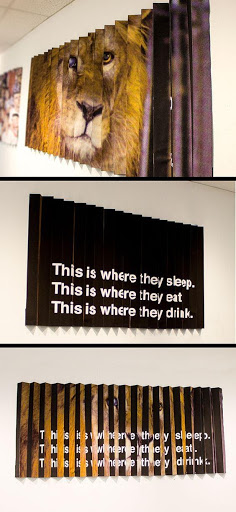
4OVER4’s prints one of the few commercial 3D lenticular prints on the market that aren’t tacky. They’re very good still life with good composition and lighting. The print is laminated with a very fine lenticular lens. The tiny lenses that create the 3D effect are so small you can't easily see them, even at close range. You can mount them behind glass or plexiglass and the lenses are completely invisible. The parallax (3D effect) could be a little more pronounced but most lenticular 3D prints are flattened slightly to bring more of the image into focus.
- Booth signage
- Any size murals
- Pre-show mailers
- Handouts
- 10” Tall Panels
Mailer & Things
One of the best ways to get your message across is to use common methods of promotion. You have a better chance of getting your message across by using lenticular prints.
Bookmarks: If you’re looking for something different in the world of bookmarks, these are awesome! They’re so 3D they look real! You will wish your 4D TV had this much dimension. These are highly recommended for that book lover in your life, they will truly love lenticular bookmarks.
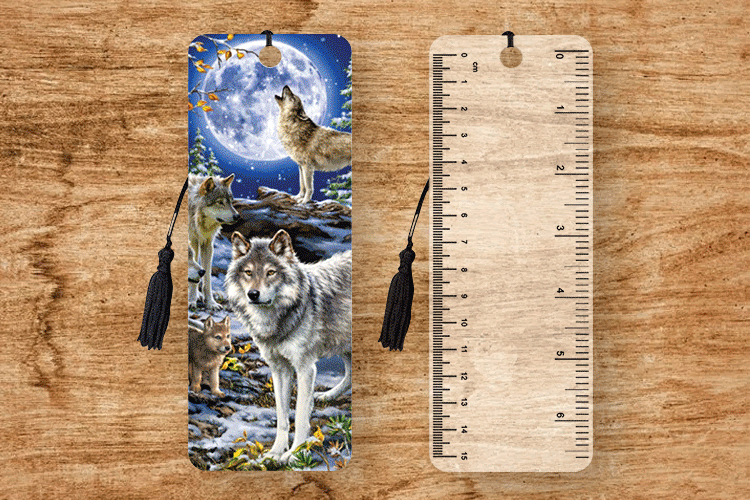
- Business cards
- Buttons
- Cards
- Danglers/ Hangtags
- Event Badges
- Inserts
- Lanyards
- Postcards
- Tip-ons
Posters & Signage
Lenticular prints can be used in the most unique way to convey messages that target audiences appropriately. This 3D lenticular poster on the street has a message that only kids can see. In an effort to provide abused children with a safe way to reach out for help, a Spanish organization called the Aid to Children and Adolescents at Risk Foundation, or ANAR at the same time.
- Bus/Transit shelters
- Movie posters
- POP Displays
- Window signage
- Metro stations
- In-store product displays
3D Lenticular business cards
27 million cards are printed daily according to a survey by CreditDonkey. This proves that generally, business cards are an integral tool for doing business even in today's digital age! Sadly, 88% of those cards printed are tossed into the trash within a week. This is why small business owners opt for 3D lenticular business cards to make a killer first impression!
What is a lenticular business card
Business cards whose design has been made using the Lenticular printing process and technology are known as 3D lenticular business cards. They have risen in prominence and popularity because they give the business an opportunity to maximize by giving more information about the business simultaneously.
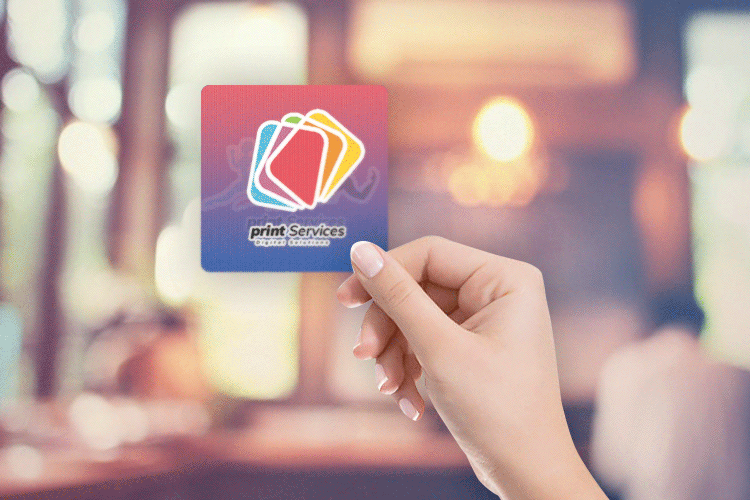
3D lenticular business card
What is a lenticular business card
Business cards whose design has been made using the Lenticular printing process and technology are known as 3D lenticular business cards. They have risen in prominence and popularity because they give the business an opportunity to maximize by giving more information about the business simultaneously.
How to make 3D lenticular stickers
For stickers, the creation of lenticular printing images in small sizes is accomplished by using injection printing on paper followed by gluing the printed image on lenticular lens plastic. Adhesives are added as an additional layer and also internal reflexes between the layers. The effect however does have limited frames. You can only have two to three frames.
Offset printing reproduces up to 10 frames of animation.
Offset printing?
Offset printing is a technology that uses plates, usually made from aluminum. The plates are then used to transfer an image onto a rubber “blanket”. The image is then rolled onto a sheet of paper. The process is referred to as offset because the ink is not transferred directly onto the paper.
Offset printing is very efficient and fast and works best when the quantities ordered are large. Offset printing also provides accurate color reproduction and an irresistible professional finishing.
Using digital printing for stickers
Digital printing can also be used to print lenticular stickers but in this case toners (like those in laser printers) or larger printers that use liquid ink instead of the plates used in offset printing.
As opposed to Offset printing, digital printing works best when there are small quantity orders like 20-100. Digital printing also does well when data is varying from sticker to sticker. Variable data such as unique code, name or address can only be accomplished through the use of digital printing.
In summary, these are the advantages of digital printing:
- Budget friendly
- Variable data capability
- Better quality due to improved technology
- Lower setup costs for short runs
- Lower minimums (1, 20, 100)
- You print the amount you need only and when you need it.
-
These are the benefits of offset printing:
- Very high printing quality, color fidelity and high definition
- Gives the designer freedom to use a large variety of paper types with custom finishes
- You can print large quantities cost effectively
- Custom inks such as metallic and pantone colors are available
- The larger the quantity the cheaper the price

3D lenticular business card
How to make a lenticular business card
Since a 3D image can only house a maximum of 3 images, in a 3D business card you can have the logo, products offered, and contact information. Detailed information about where the company is located can be included in the back of the card.
Considerations for lenticular printing:
Dark solid colored and/or textured backgrounds work well with this effect.
Avoid white backgrounds when possible.
White and light-colored areas are transparent, other views/flips will show through white areas causing a ghosting effect. White and light-colored areas only work well if each view has white/light colors in the exact same area.
Use bold sans serif fonts and avoid small text. Small, fine, and thin types do not work well for 3D Lenticular prints; fonts get distorted through the lens/plastic surface, so the bolder the better.
Text that varies from view to view/file to file should NOT overlap, but instead, be in a different position on each view.
The designer determines the images that the owner wants to include in the business card. Some involve photography. If photography is a necessity, the process of taking photos is a very complex, delicate process. For instance, if you need to take photos of a person, the subject of the photo should have one pose or poses that show progress in motion.
If the images are satisfactory they are uploaded to a 3D software such as a 3D master kit from Traxxas. The software helps the designer determine the kind of effect that will be on the card. For a successful product, the designer must ensure that all the frames are aligned perfectly before processing the finished product. It is later on printed on foil where the resolution has already been set.
The difference between holographic and lenticular business cards


Although both lenticular and holographic printing create an optical illusion based on the principle of parallax, the underlying technologies are completely different. According to a company called Print Industry, holograms are produced with special lasers because they are best seen under special lighting conditions such as UV light. Illumination from lasers makes them visible while the absence of laser lighting makes them look colorless.
Lenticular prints, on the other hand, do not require any special lighting to reflect their movement or depth. They also do not require the use of 3D glasses to become more visible.
Holographic printing is used majorly to prevent forgery and that is why you find it on passports, driving licenses, banknotes, stock certificates.
Lenticular prints are used majorly for advertising on posters, stickers, labels and also on a day to day marketing collateral such as business cards, postcards, magnets and notebooks.
Another difference is that relatively speaking, lenticular printing can be done with very basic office equipment while holographic printing must be done in an industrial environment with delicate equipment.
3D Lenticular stickers
Personalized custom 3D lenticular stickers will set you apart from ordinary monotonous stickers which most businesses in the market are using right now. The effects applied in these stickers are depth, 3D, flip, animation, zoom or morphing.
All you need to do is to approach your printer with personal lenticular custom images. It gets easier because these photos can be taken with a smartphone with the Depth effect function. Though 3D photos do not always display the depth effect correctly the 3D conversion algorithm can be configured to create the effects more accurately.
For stickers, the creation of lenticular printing images in small sizes is accomplished by using injection printing on paper followed by gluing the printed image on lenticular lens plastic. Adhesives are added as an additional layer and also to create internal reflexes between the layers. The effect however does have limited frames. You can only have two to three frames.
However, offset printing reproduces up to 10 frames of animation.
How to make 3D lenticular stickers
For stickers, the creation of lenticular printing images in small sizes is accomplished by using injection printing on paper followed by gluing the printed image on lenticular lens plastic. Adhesives are added as an additional layer and also internal reflexes between the layers. The effect however does have limited frames. You can only have two to three frames.
Offset printing reproduces up to 10 frames of animation.
Offset printing?
Offset printing is a technology that uses plates, usually made from aluminum. The plates are then used to transfer an image onto a rubber “blanket”. The image is then rolled onto a sheet of paper. The process is referred to as offset because the ink is not transferred directly onto the paper.
Offset printing is very efficient and fast and works best when the quantities ordered are large. Offset printing also provides accurate color reproduction and an irresistible professional finishing.
Using digital printing for stickers
Digital printing can also be used to print lenticular stickers but in this case toners (like those in laser printers) or larger printers that use liquid ink instead of the plates used in offset printing.
As opposed to Offset printing, digital printing works best when there are small quantity orders like 20-100. Digital printing also does well when data is varying from sticker to sticker. Variable data such as unique code, name or address can only be accomplished through the use of digital printing.
In summary, these are the advantages of digital printing:
- Budget friendly
- Variable data capability
- Better quality due to improved technology
- Lower setup costs for short runs
- Lower minimums (1, 20, 100)
- You print the amount you need only and when you need it.
-
These are the benefits of offset printing:
- Very high printing quality, color fidelity and high definition
- Gives the designer freedom to use a large variety of paper types with custom finishes
- You can print large quantities cost effectively
- Custom inks such as metallic and pantone colors are available
- The larger the quantity the cheaper the price
How to get 3D stickers off your car
https://www.youtube.com/watch?v=we7wDJW1f1k
There are different ways to remove a 3D sticker from your car:
You can use a razor if the 3D sticker has a friendly looser adhesive.
A heating gun should be used if using a razor will result in damaging the surface. However, if the surface is plastic you need to be careful because it can damage the plastic. When heating a plastic surface you need to constantly check with your hand so that you can ensure that the surface has warmed up enough to peel off the sticker by hand.
If the above two methods prove to be harmful to your surfaces, you can also use an adhesive cleaner such as Goo Gone. You just need to lift one edge of the decal with a razor or your nail then start cleaning the adhesive progressively. For older cars, you should strictly move horizontally to preserve the surface.
If glue remains, use an adhesive cleaner to remove it by wiping it off with a towel you have soaked in the cleaner.
3D Lenticular Bookmarks
How to make 3D lenticular bookmarks
https://www.youtube.com/watch?v=jIfAi_zJ2F4
Like any ordinary lenticular prints, 3D lenticular bookmarks go through the same process but in summary here it is:
- Take two to three pictures with binocular disparity
- Find the key plane of the lenticular picture
- Align a common point on the key plane.
- Crop the image to account for the shift during alignment
- Resize the image
- Create a mask for the right and left image
- Remember interlacing? Interlace each image with the mask created
- Flatten the final image.
What size is a standard 3D lenticular bookmark?
A standard 3D Lenticular bookmark is in the following dimensions:
- 2” x 6”-vertical
- 6” x 2”- horizontal
- 2” x 8” – vertical
- 8” x 2” – horizontal
3D Lenticular posters
https://www.youtube.com/watch?v=VRNpFp2L8UY
Where can I find 3D lenticular posters?
3D lenticular posters are made in the same lenticular process but on a larger scale. The lens is pitched, on a pitch checker. Secondly, the photographic paper is scanned by laser jet to reproduce 2D with encoded with 3D information.
Later on, it is trimmed and laminated.
You can get 3D lenticular posters from 4OVER4 at the following prices.
- 11“ x 17”- Vertical (10 Pieces- $750)
- 12” x 18” – Vertical (10 Pieces- $775)
- 13” x 19” – Vertical (10 Pieces- $ 815)
- 18” x 24” – Vertical (10 Pieces- $950)
- 23” x 31” – Vertical (10 Pieces- $1450)
- 17” x 11“ – Horizontal (10 Pieces- $750)
- 18” x 12” – Horizontal (10 Pieces- $775)
- 19” x 13” – Horizontal (10 Pieces- $815)
- 24” x 18” – Horizontal (10 Pieces- $950)
- 31” x 23”- Horizontal (10 Pieces- $1450)
3D Lenticular Greeting Cards
3D lenticular greeting cards are printed using 3D lenticular technology and have become quite a big deal of late. They are flat but have cool effects, they are a definite cut above regular greeting cards. They’re perfect for communicating certain emotions with their unique ability to have motion effects. A new year’s card lenticular greeting card showcasing fireworks is definitely much more interesting and worth keeping way after the new year’s period.
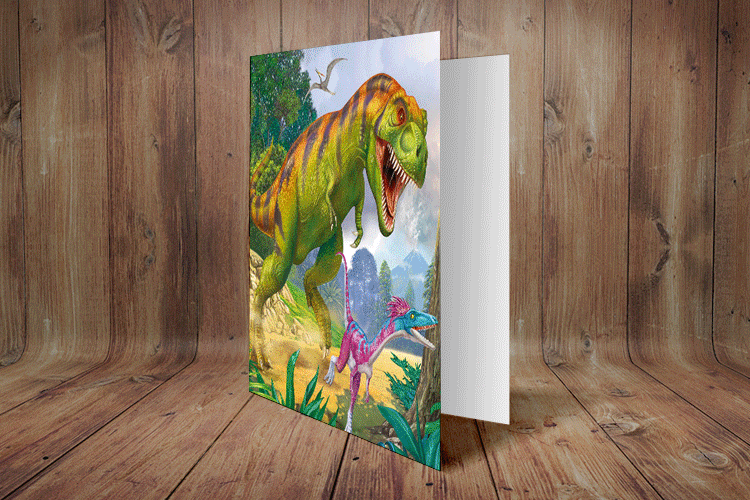
Dinosaur’s 3D lenticular greeting card
How to make 3D lenticular greeting cards
3D lenticular technology is used to make 3D lenticular greeting cards and it brings the images to life. Just find images that can work well together and find out how to blend them. A company like 4OVER4 has a design team that will guide you through each step of the process until you are done.
When making 3D lenticular greeting cards, the front part is made as explained above. The card stock on the back side is left plain or printed with a message of your choosing.
If unsure of anything at any point of your design, you can always reach out to the customer service desk with your concerns and they will be quick to respond and your greeting cards will be on their way to the printing area in a short time.
How to start a 3D lenticular greeting card business
Information from a study by Grand View Research shows that North America emerged as the largest market for 3D printing with a revenue share of more than 35.94% in 2019.
This number is projected to grow and it shows just what a big deal 3D printing will become. Based on this, it's a great idea to jump on the bandwagon and head into the anticipated growth of 3D printing.

If you're thinking of starting a 3D Lenticular greeting card business, you need to consider these four things:
- Will you have a physical location or will your business be purely online? A walk-in store will have the appeal of traditional business trustworthiness. On the flipside, it will also have more overheads to deal with.
- What is your target market going to be? If you will target youth, you need to design and market accordingly. Bright colors and trendy images will have youthful allure. For middle-aged people, relaxed tones and an emphasis on calm emotions or settings will be a hit. Holiday destinations and beachy images will be especially great for postcards. For the senior generation, warm colors and images invoking family values will be welcome. Make sure you have a cross-section of designs that will appeal to a wider crowd. If you decide to go niche, then be prepared to possibly wait a substantial length of time before you break even.
- Do you have any background in design? It's important to be able to come up with great designs and appealing layouts. With 3D lenticular printing especially, it matters a lot how you design towards your final goal. It may be a good idea to seek the help of a qualified designer who will guide you in realizing your prints.
- Finally, where will you get your printing done? You need to be prepared to find a good printer who will never fail you in terms of turnaround time as well as design execution. While it will be best to stick with one printer, it's advisable to try a few printers out to make sure that you settle for the best one in the market. If you want to get your own large scale printing done, be prepared to fork out between $30,000 and $70,000 for a machine. The cost depends on its specifications, your source, and shipping costs. Otherwise, follow the instructions above for manual 3D lenticular printing above.
Alternatively, you can consider becoming a reseller and purchase your prints from established printers in the field of lenticular printing.

How to write a 3D lenticular greeting card
You need to take care when writing your 3D lenticular greeting card in order to make the whole effect seamless. First, make sure that you choose a legible font that is not especially faint or thin. Thin fonts will be difficult to read due to the parallax effects of the lenticular lenses. Fancy fonts will give a pretty effect but make sure they are bold enough as well as consistent. Times New Roman, Aerial, Gotham, and even Comic Sans are all fonts that will be easy to read in a lot of situations if you need to pick a font.
Also, make sure that the text is not smaller than 10 points because smaller visuals will tend to disappear within the lenticules. Go for fewer words so they can be in a big enough font without crowding the card.
If you want to personalize your card with your own hand-written calligraphy, consider taking a class on Introduction to modern brush calligraphy and developing your own unique calligraphy style by Kimberly Shrack of Hoopla! Letters. She will walk you through the steps she takes when developing her signature styles, from collecting and critically reviewing inspiration to identifying the style anchors that define your look.
Finally, keep the majority of your writing to the back in order to maximize the attention given to the images. A picture is worth a thousand words after all, so how much more do you figure the picture will be worth if it has depth and/or motion?
Where to buy 3D lenticular greeting cards
If you want to wow your friends and family this festive season, a quick online search of '3D lenticular greeting cards sale' should return plenty of options for you. Be sure to settle for printers like 4OVER4 who have been in the industry for over 20 years and always use the latest technology. After going over the design basics, sit back and relax as your cards are made and you can give them as an extremely memorable gift.
3D Lenticular Postcards
The only thing better at spreading joy than a postcard is a 3D lenticular postcard. Available in a variety of designs and effects, you can get exactly what you need. If you don't already have a design in mind, check out our templates for inspiration. You can get any effect you want in crisp quality and in a short time.
How to print 3D lenticular postcards
3D lenticular technology is used to make 3D postcards and makes the images come to life. Because you can have anything in your imagination, these will suit any occasion you want to use them for. When making 3D lenticular postcards the process is similar to making any lenticular image, the front part is made through a method called interlacing, where two or more images are divided into tiny strips and then combined as a single image through numerous specific arrangements. The card stock on the back side is printed with horizontal lines to write your message. There are also small stamp boxes to show where to place your stamps in order to post out this gorgeous piece of art.
Due to their artistic form, it's no surprise that they lend themselves well to scrapbooking, post-crossing, and also make great collector’s items. School children can use these to take school postcard exchange projects to a new level of fun and creativity.
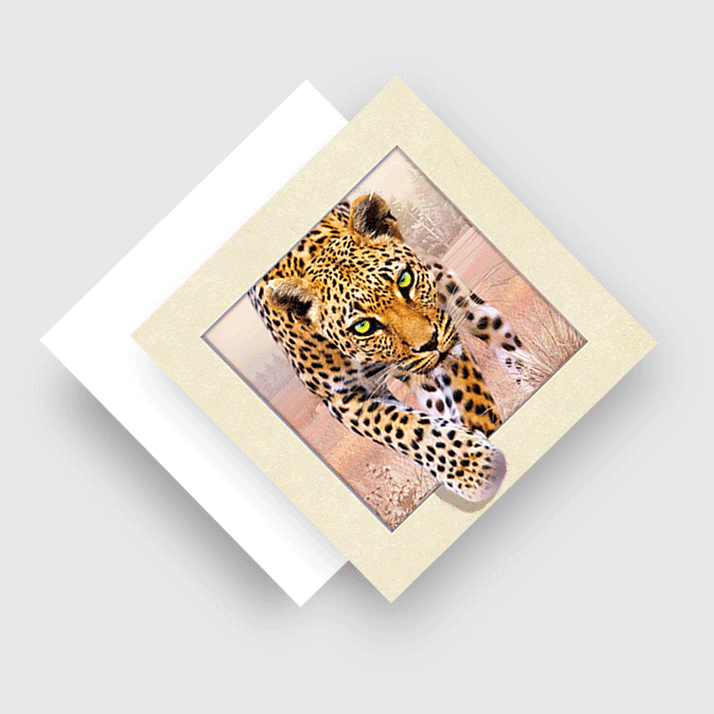
What is the size of 3D lenticular postcards?
Our 3D lenticular Postcards measure 4"X6" and when you consider the fact that you can get up to four flips of different images, this amounts to a lot of information on this space. The 31pt 3D paper they are printed on is perfect for durability and with low minimums of 500 pieces it's easy to get unique.
You can choose between straight edges or rounded corners of either 1/8" or 1/4" to make the artwork fit your desired quality. Because it's going to take 18 days to get them, you need to get your order in good time and avoid the last-minute rush. You are assured of stellar quality though so once we go over the design and technical aspect of the design you can sit back and relax.
3D Lenticular Magnets
3D lenticular magnets are a great collector’s item and you can be sure to find a few in any collector's stash. The artwork can be vintage and cool or trendy and upbeat. Whatever you need, you can have it made into a gorgeous magnet that will be sure to be the center of attention in any setting. These magnets are quite popular for sprucing up your fridge at home and are great conversation starters especially for brands promoting their products on them.
How to Make 3D Lenticular Magnets
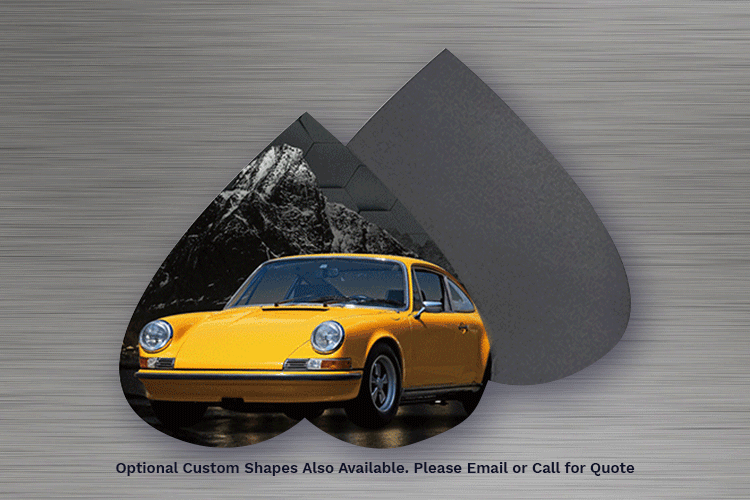
3D lenticular magnets are made by making the lenticular print on the front part where instead of affixing it to card stock, the magnetic material is used on the back. You may have a thin paper backing on the magnet in the event you need to write a name or short message. This makes the whole magnet professional and superb quality that you can hand out as a corporate gift. The magnet used is really light and may be bent so you need to take care to keep it straightened out.
What’s the size of 3D lenticular magnets
These cool lenticular magnets are available in quite a number of sizes from 2"X3.5" to 7"X5" and anything in between. The paper stock is a 45 point quality lenticular magnet and with minimums of 500, these are perfect for a small business to gift its employees and customers. If you need a custom size that is not listed on our drop-down menu, just get in touch and we will have something made for you. You can make your magnets even more custom by getting rounded corners if you want. Whatever it is you need, we are here to give you a hand with it.
Where are 3D lenticular magnets used?
These versatile pieces of fun art can be used in a number of settings. Because of their magnetic quality, they can be placed on fridges, lockers, and any other metallic surface. This makes them fun and easy to use because you don't have to worry about finding special adhesives. They are also easy to move around and once removed from where they are, they leave zero residue on the surface.
3D Lenticular Notebooks
3D lenticular notebooks are bound to grab attention and startup quite a few conversations. Get the images that speak about your brand and get in touch with us to find out what kind of effect you can get. If you're thinking of corporate gifts for your team or your clients, these will be ideal. They also keep your brand on the front of everyone's memory because of their artistic and functional nature.
How to Make 3D Lenticular Notebooks
3D lenticular notebooks are made like any other high-quality notebook would be made. Once the pages have been assembled whether plain or ruled, they are bound. Spiral binding works best because the lenticular front cover will be a bit hard and bending it will cause it to break or simply ruin the 3D effect. The cover is made to your specifications; with the graphics and effects of your choosing. Once all individual pieces have been made, they are joined together. Your 3D lenticular notebook is now ready to take notes and dazzle all who come across it.

What’s The Size of 3D Lenticular Notebooks
You can place an order for your 3D lenticular notebooks and specify the number of pages you would like and the size. Pick from 4.25" x 5.5", 4" x 6", 5.5" x 8.5", or 8.5" x 11" and specify the effect you want. With a minimum order of just 50 pieces, you will get your gorgeous notebooks in great time. If you need lots more- like a thousand pieces, for instance, these too can be done.
Resources
-
DIY 3D lenticular printing instructions:
-
How 3D works
-
Statistic on 3D printing numbers:
-
3D lenticular printing machine cost approximation:
-
A selection of fonts for purchase:
-
Slider bar purchase link:
-
Johnsbyme
-
Lenticular printing Optigraphics-
-
History of lenticular printing Wikipedia-
-
Lenticular printing Elite flyers-
-
Holograms vs. Lenticular Prints: Labels, Stickers, Decals, and Pressure Sensitive Products Print
Industry-
-
Digital Printing vs Offset Printing Explained Printing for less-
-
3D Lenticular Printing Using Photoshop and Inkjet Printer Instructables-
-
How to remove a sticker from your car 8Cars.com-
More from 4OVER4
3563
Whether you're an established business magnate or an emerging entrepreneur on the rise, one thing remains undeniable: <a href="https://www
Jul 26, 2024
12117
People often overlook the importance of pocket folders in businesses. This is the world of digital media where LinkedIn and Google g
Jul 26, 2024
2710
A well-designed business card is important for making a memorable first impression. It represents your brand
Jul 26, 2024
2203
A business card can help represent you professionally. These cards contain your contact info, job title, and company details. As a result, the
Jul 26, 2024
1687
New digital features have been introduced to business cards, making business connections more effective than they used to be. Technology has r
Jul 27, 2024
11644
First impression matters, especially when marketing your small business. An effective business card design will help you impress potential pro
Jul 26, 2024
